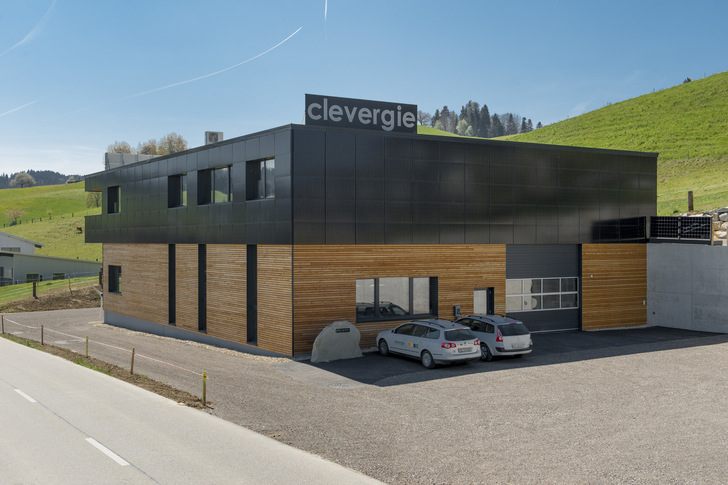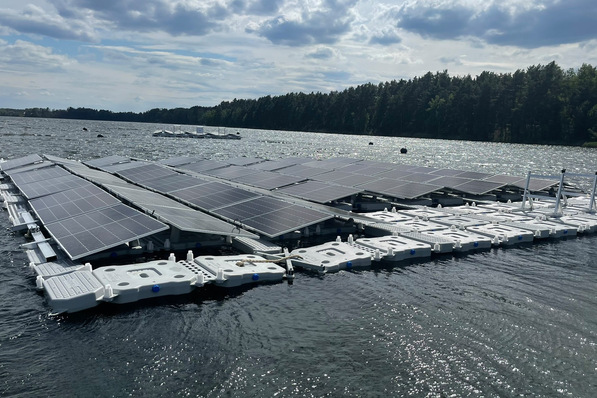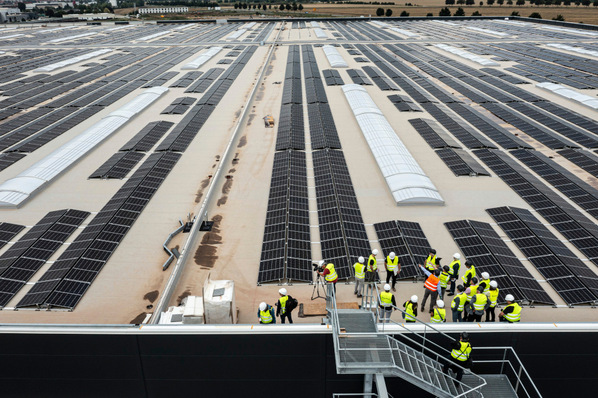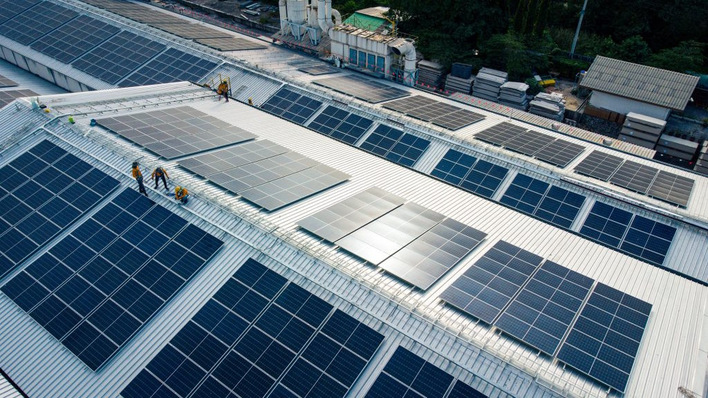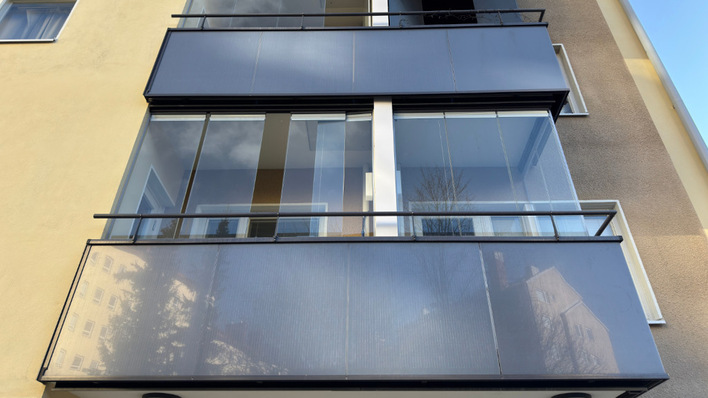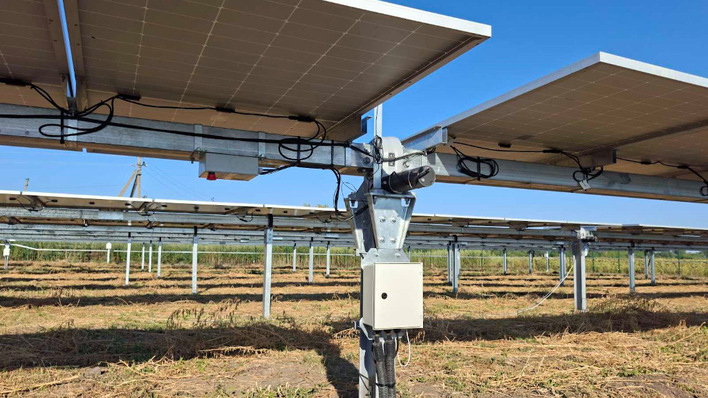Building-integrated photovoltaic systems (BIPV) are photovoltaic cells that are capable of being integrated into the building envelope, such as the roof or the facade, to generate clean energy from sunlight. Such a system plays two roles in the building. First, it functions as the building's outer skin. Hence, the system must have the specification of conventional building envelope materials like weather and/or noise protection, heat insulation, structural strength etc. Second, the system is a power generator for the building.
Therefore, BIPV could be a reasonable option for building skins (among other building envelope materials such as brick, wood, stone, metals etc.) with at least one advantage over the other alternatives: The dual functionality of the system that makes the building envelope into a source of income for the building.
See also:
BIPV beginning to become competitive
The question that naturally comes up in this respect is whether BIPV as a building envelope material for the entire outer skin of a building is economically feasible in Europe compared to other alternatives.
LCCA of BIPV systems
To answer this question, an investigation was undertaken which deals with the lifecycle cost analysis (LCCA) of BIPV systems in the capitals of all the European Union member states as well as the capitals of Norway and Switzerland.
As part of the proposed LCCA of BIPV systems, an attempt was made to monetize the societal and environmental benefits a BIPV system. The quantified benefits were as follows:
- savings in power losses due to transmission;
- savings in power delivery cost;
- savings in the societal cost of carbon (SCC);
- savings in building envelope material cost.
Moreover, as said before, BIPV systems play two roles in the buildings. The first aspect represents the share of the costs that is avoided because no conventional building material (passive element) has to be used. The second aspect represents the actual additional costs that the building owner needs to spend in order to apply a PV functionality (which is energy production) to their building evelope. The total cost results from the sum of the two contributing factors.
Economic analysis of BIPV
The crucial fact is that in the LCCA of BIPV system as a substitute for the conventional building envelope materials, what should be included into the calculations is the extra costs that the BIPV system causes because of its second function and not the overall cost. Thus, the economic analysis of BIPV related to the total cost as well as the second part was accomplished to compare the results.
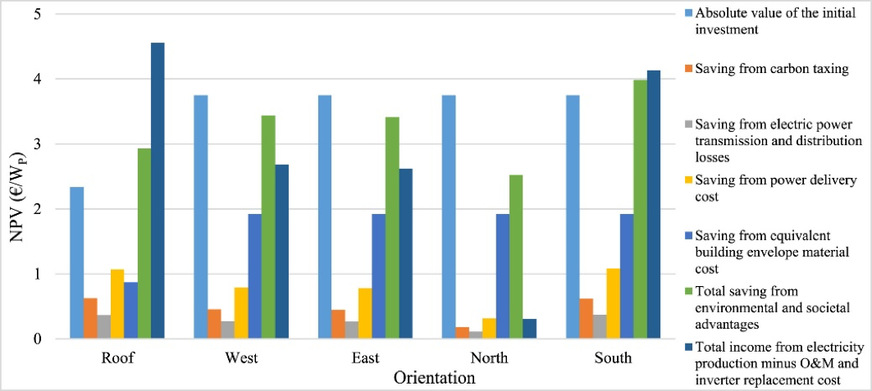
Energy Journal
In terms of the east, west and north facade, the quantified amount of societal and environmental advantages of the BIPV system in Europe is higher than the income from electricity production. However, in terms of the south facade and the roof orientations, the total NPV income from electricity production is more significant compared to the monetized amount of societal and environmental benefits of the BIPV system.
BIPV materials as an option for the building envelope
In order to see the performance of the BIPV system as a building envelope material for the entire building skin with all orientations including the roof area, the cumulative NPV of BIPV materials for the whole building skin in European countries is presented as follows. The difference between “Old model” and “Presented LCCA” is the quantified societal and environmental factors. “BIPV Investment” stands for the average total investment cost due to both functions of the system in buildings. “Conv. material” refers to the average cost of conventional building envelope materials such as brick, wood, stone, metals etc.
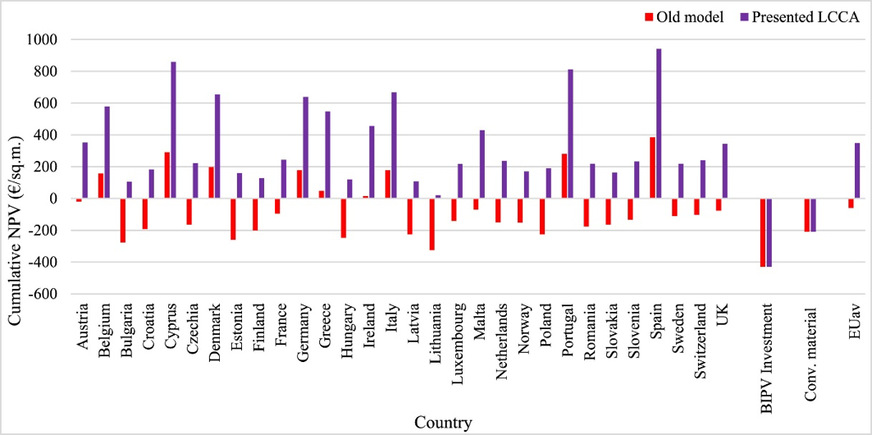
Energy Journal
One of the most significant findings to emerge from this study was that even the north facade could be economically feasible in some countries in Europe if all the environmental and societal benefits of the BIPV system are being taken into consideration. The results of this investigation also showed that the BIPV system as a building envelope material for the entire building skin could reimburse all the investment costs and become even a source of income for the building.
It has become clear that the perception of BIPV technology as an unfeasible system for the building envelope should change to one of BIPV materials as an option for the building envelope regardless of direction or orientation. In other words, when an architect is looking for an option among building envelope materials in the market, BIPV should be seen as a reasonable option with at least one advantage compared to the other alternatives, which is the dual functionality of the system that makes the envelope a source of income for the buildings.
For more information, you can find the full paper just published in the Energy Journal. (mfo)


